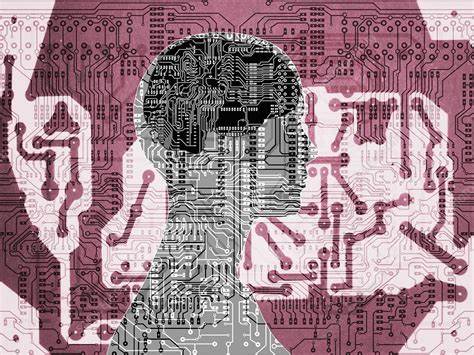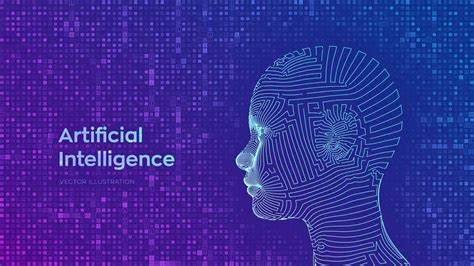Status of Artificial Intelligence (AI) in Libraries: why Pakistan Libraries are needed to Adopt AI in Digital Era آرٹیفیشل انٹیلیجنس اور کتب خانے
Mr. Bakht Yar Zafar
Abstract
Artificial intelligence (AI) can be used in many different ways to improve the services offered by libraries and make the library experience more efficient and convenient for patrons. Some examples of AI applications in libraries include recommendation systems, which use algorithms to suggest similar or related materials based on a patron’s borrowing history and interests; search optimization, which helps improve the accuracy and relevancy of search results by analyzing the content of library resources and patron queries; digital assistants, which provide information about library resources and services to patrons through a library’s website or mobile app; chatbots, which interact with patrons and provide assistance with tasks such as renewing books and finding resources; and collection management, which helps libraries analyze and maintain their collections by identifying high-demand resources and analyzing the content of library materials. Overall, the use of AI in libraries can help improve the efficiency and effectiveness of library services, making it easier for patrons to access the resources they need.
Keywords: Academic libraries, Pakistan, Public Libraries, Special Library, National libraries, Workers, all Types of Libraries in Pakistan

- Background of AI in Libraries:
Artificial intelligence (AI) has been used in libraries for several decades, with the first AI applications being developed in the 1980s. Early AI applications in libraries focused on automating tasks such as cataloging and classification, as well as improving the accuracy and relevancy of search results.
As AI technology has developed over the years, libraries have been able to use more advanced AI applications to improve their services. For example, libraries can now use recommendation systems to suggest similar or related materials to patrons based on their borrowing history and interests, and chatbots to provide assistance with tasks such as renewing books and finding resources.
In recent years, the use of AI in libraries has become more widespread, with many libraries adopting AI-powered digital assistants and chatbots to provide information and assistance to patrons. Some libraries have also started using AI to analyze and understand the content of library resources, which can help improve the organization and categorization of library materials.
Overall, the use of AI in libraries has evolved significantly over the years and continues to be an important tool for improving the efficiency and effectiveness of library services.
Artificial Intelligence use in Libraries:

There are many ways in which artificial intelligence (AI) can be used in libraries to improve the services they offer and make the library experience more efficient and convenient for patrons. Some examples of AI applications in libraries include:
- Recommendation systems: AI can be used to recommend books, articles, and other resources to patrons based on their past borrowing history and interests. Recommendation systems are a type of artificial intelligence (AI) application that can be used in libraries to recommend books, articles, and other resources to patrons based on their past borrowing history and interests. These systems use algorithms to analyze the resources that a patron has borrowed in the past and use this information to suggest similar or related materials that the patron may be interested in.
For example, if a patron has borrowed several books on a particular topic, the recommendation system might suggest other books on that topic or related topics. The recommendations can be personalized to each patron, so the suggestions made to one patron may be different from those made to another patron based on their unique borrowing history and interests.
Recommendation systems can be accessed through a library’s website or through a mobile app, and they can be a convenient way for patrons to discover new resources that they may not have found on their own. They can also help librarians to promote and highlight underutilized resources in the collection.
- Search optimization: AI can help improve the accuracy and relevancy of search results by analyzing and understanding the content of library resources and the queries patrons enter. Search optimization is the process of improving the accuracy and relevancy of search results for a particular query. In the context of libraries, search optimization can be used to help patrons more easily find the resources they are looking for within a library’s collection.
Search optimization is the process of improving the accuracy and relevancy of search results for a particular query. In the context of libraries, search optimization can be used to help patrons more easily find the resources they are looking for within a library’s collection. Artificial intelligence (AI) can be used to help improve search optimization in libraries by analyzing and understanding the content of library resources and the queries that patrons enter. For example, an AI system might be able to recognize synonyms or related terms for a particular search query and use this information to return more relevant results.
AI can also be used to analyze the content of library resources and understand the main topics or themes covered in each resource. This information can be used to improve the accuracy and relevancy of search results by matching the content of resources with the search queries that patrons enter.
Overall, the use of AI in search optimization can help patrons more easily find the resources they need, improving the efficiency and effectiveness of library services.
Artificial intelligence (AI) can be used to help improve search optimization in libraries by analyzing and understanding the content of library resources and the queries that patrons enter. For example, an AI system might be able to recognize synonyms or related terms for a particular search query and use this information to return more relevant results.
AI can also be used to analyze the content of library resources and understand the main topics or themes covered in each resource. This information can be used to improve the accuracy and relevancy of search results by matching the content of resources with the search queries that patrons enter.
Overall, the use of AI in search optimization can help patrons more easily find the resources they need, improving the efficiency and effectiveness of library services.
- Digital assistants: Libraries can use AI-powered digital assistants to answer patron questions and provide information about library resources and services. Digital assistants are computer programs that are designed to assist users with tasks and provide information on demand. In the context of libraries, digital assistants can be used to provide information about library resources and services to patrons.
These assistants can be accessed through a library’s website or through a mobile app, and they use artificial intelligence (AI) to understand and respond to patron queries. For example, a patron might ask a digital assistant about the availability of a particular book, and the assistant would be able to provide information on the availability of that book at the library and any other relevant details.
Digital assistants can also be used to answer general questions about the library and its services, such as operating hours, location, and policies. They can provide a convenient way for patrons to access information and assistance without needing to speak to a librarian directly.
Overall, the use of digital assistants in libraries can help improve the efficiency and convenience of library services by making it easier for patrons to access the information they need.
- Chatbots: Libraries can use chatbots to interact with patrons and provide assistance with tasks such as renewing books, placing holds, and finding resources. Chatbots are computer programs that are designed to simulate conversation with human users, often through messaging applications, mobile apps, or websites. In the context of libraries, chatbots can be used to interact with patrons and provide assistance with tasks such as renewing books, placing holds, and finding resources.
Chatbots use artificial intelligence (AI) to understand and respond to patron queries and requests. For example, a patron might ask a chatbot about the availability of a particular book, and the chatbot would be able to provide information on the availability of that book at the library and any other relevant details.
Chatbots can also be used to answer general questions about the library and its services, such as operating hours, location, and policies. They can provide a convenient way for patrons to access information and assistance without needing to speak to a librarian directly.
- Collection management: AI can be used to analyze library collections and identify resources that are in high demand, helping librarians to make informed decisions about purchasing and stocking new materials. Collection management is the process of organizing and maintaining a library’s collection of resources, including books, articles, and other materials. Artificial intelligence (AI) can be used to help with collection management by analyzing library collections and identifying resources that are in high demand.
For example, an AI system might analyze the borrowing history of a library’s collection and identify resources that are frequently borrowed or requested. This information can be used to inform purchasing and stocking decisions, allowing librarians to prioritize the acquisition of high-demand materials.
AI can also be used to analyze the content of library resources and understand the main topics or themes covered in each resource. This information can be used to improve the organization and categorization of library materials, making it easier for patrons to find the resources they need.
Overall, the use of AI in collection management can help libraries make more informed decisions about their collections and improve the efficiency and effectiveness of their services.

- literature review
There has been a significant amount of research and literature on the use of artificial intelligence (AI) in libraries. Some key findings and trends from this literature include:
Improved efficiency and effectiveness: Many studies have found that the use of AI in libraries can help improve the efficiency and effectiveness of library services, by automating tasks, improving the accuracy and relevancy of search results, and providing more personalized recommendations to patrons.
Enhanced patron experience: Several studies have found that the use of AI in libraries can improve the patron experience by making it easier for patrons to access information and resources and providing more convenient and efficient services.
Increased access: The use of AI in libraries can help increase access to library resources and services, particularly for patrons who are unable to visit the library in person. For example, AI-powered chatbots and digital assistants can provide assistance to patrons remotely.
Challenges and limitations: While the use of AI in libraries can bring many benefits, there are also some challenges and limitations to consider. These include the need for sufficient data to support AI applications, the cost of implementing and maintaining AI systems, and the need to develop policies and procedures to govern the use of AI in library services.
The literature suggests that the use of AI in libraries has the potential to significantly improve the efficiency and effectiveness of library services and enhance the patron experience, but there are also important challenges and limitations to consider.

- Why we use AI in Libraries ?
There are several reasons why libraries may choose to use artificial intelligence (AI) in their services. Some of the main benefits of using AI in libraries include: Some of the main benefits of using AI in libraries include:
Improved efficiency: AI can help automate tasks and processes in libraries, allowing librarians to focus on more high-level tasks and providing patrons with more efficient service. For example, AI can be used to answer patron questions, renew books, and place holds, freeing up librarians to spend more time on tasks such as collection management and programming.
Enhanced patron experience: AI can help improve the patron experience by making it easier for patrons to access information and resources. For example, recommendation systems and chatbots can help patrons discover new materials and provide assistance with tasks such as finding resources and placing holds.
Improved accuracy: AI can help improve the accuracy of search results and recommendations by analyzing and understanding the content of library resources and patron queries. This can help patrons more easily find the resources they need and discover new materials that they may be interested in.
Increased access: Libraries can use AI to provide services to patrons remotely, such as through chatbots or digital assistants. This can make it easier for patrons to access information and assistance, even if they are unable to visit the library in person.
Enhanced patron experience: AI can help improve the patron experience by making it easier for patrons to access information and resources. For example, recommendation systems and chatbots can help patrons discover new materials and provide assistance with tasks such as finding resources and placing holds.
The use of AI in libraries can help improve the efficiency and effectiveness of library services, making it easier for patrons to access the resources they need. The use of AI in libraries can help improve the efficiency and effectiveness of library services, making it easier for patrons to access the resources they need.

- Future of AI in Libraries:
It is likely that artificial intelligence (AI) will continue to play an important role in the future of libraries. As AI technology continues to advance, libraries may be able to use more advanced AI applications to improve their services and make the library experience more convenient and efficient for patrons.
Some potential future developments for AI in libraries might include:
Improved recommendation systems: AI-powered recommendation systems could become more sophisticated, using more data sources and advanced algorithms to provide more accurate and personalized recommendations to patrons.
Enhanced digital assistants: Digital assistants could become more intelligent and capable of answering a wider range of patron queries and providing more detailed information about library resources and services.
Virtual librarians: Libraries could use AI to provide virtual librarian services, such as answering patron questions and providing assistance with tasks such as finding resources and placing holds.
Personalized learning: Libraries could use AI to provide personalized learning experiences to patrons, based on their interests and needs. This could include customized reading lists, learning plans, and other resources.
Overall, the use of AI in libraries is likely to continue to evolve and grow in the future, and it will be an important tool for improving the efficiency and effectiveness of library services.

- Requirements for AI in Libraries:
There are several requirements that libraries should consider when implementing artificial intelligence (AI) in their services. Some of the key considerations include:
Data: AI systems often require large amounts of data to be effective, so it is important for libraries to ensure that they have access to sufficient data sources to support their AI applications. This could include data on patron borrowing history, resource usage, and search queries, as well as data on the content of library resources.
Infrastructure: Libraries will need to have the necessary infrastructure in place to support AI applications, such as servers, storage, and networking equipment. They may also need to invest in specialized hardware and software to support AI applications.
Expertise: Libraries will need to have access to experts with the necessary skills and knowledge to implement and maintain AI applications. This could include data scientists, software developers, and AI specialists.
Budget: Implementing AI in libraries can be expensive, so it is important for libraries to have a budget in place to support the development and maintenance of AI applications.
Policies and procedures: Libraries will need to develop policies and procedures to govern the use of AI in their services, including guidelines for data privacy and security, as well as ethical considerations.

- Recommendation:
Here are a few additional points to consider when thinking about the need for artificial intelligence (AI) in libraries:
Improved collection management: AI can be used to help libraries analyze and maintain their collections by identifying high-demand resources and analyzing the content of library materials. This can help libraries make more informed decisions about their collections and improve the organization and categorization of library materials.
Enhanced programming and outreach: Libraries can use AI to analyze patron data and understand the needs and interests of their communities. This can help libraries design more effective programming and outreach efforts, and target their resources more effectively.
Improved data analysis: AI can help libraries analyze large amounts of data more efficiently, allowing them to gain insights into patron behavior and usage patterns. This can inform decision-making and help libraries better understand their patrons’ needs and preferences.
Enhanced security: AI can be used to help libraries protect their resources and patrons by detecting and preventing security threats, such as unauthorized access to library systems or materials.
The use of AI in libraries can bring many benefits in terms of improving the efficiency, effectiveness, and security of library services.

Pakistani Libraries and AI
It is likely that AI will play a significant role in Pakistani libraries in the future. Some ways AI may be used in libraries include:
Automation of routine tasks such as cataloging, data entry, and circulation management
Personalization of recommendations for books and other resources
Text and image recognition for digitization of library collections
Use of natural language processing for improved search functionality
Development of virtual reality and augmented reality technologies for enhanced learning experiences
Use of chatbots to provide 24/7 customer service
However, it is important to note that the implementation of AI in Pakistani libraries will also depend on factors such as funding, infrastructure, and government support.
The current status of AI in Pakistani libraries is not satisfactory, but it is likely that AI is not widely used in Pakistani libraries yet. However, with the increasing adoption of technology and the growth of digital resources, it is possible that more libraries in Pakistan may begin to explore the use of AI in the future.
Conclusion:
In conclusion, artificial intelligence (AI) has the potential to significantly improve the services offered by libraries and make the library experience more efficient and convenient for patrons. AI can be used in many different ways in libraries, including recommendation systems, search optimization, digital assistants, chatbots, and collection management.
The use of AI in libraries has already evolved significantly over the years and is likely to continue to grow in the future. Libraries that are interested in implementing AI in their services should consider the requirements and resources necessary to support AI applications, including data, infrastructure, expertise, budget, and policies and procedures.
